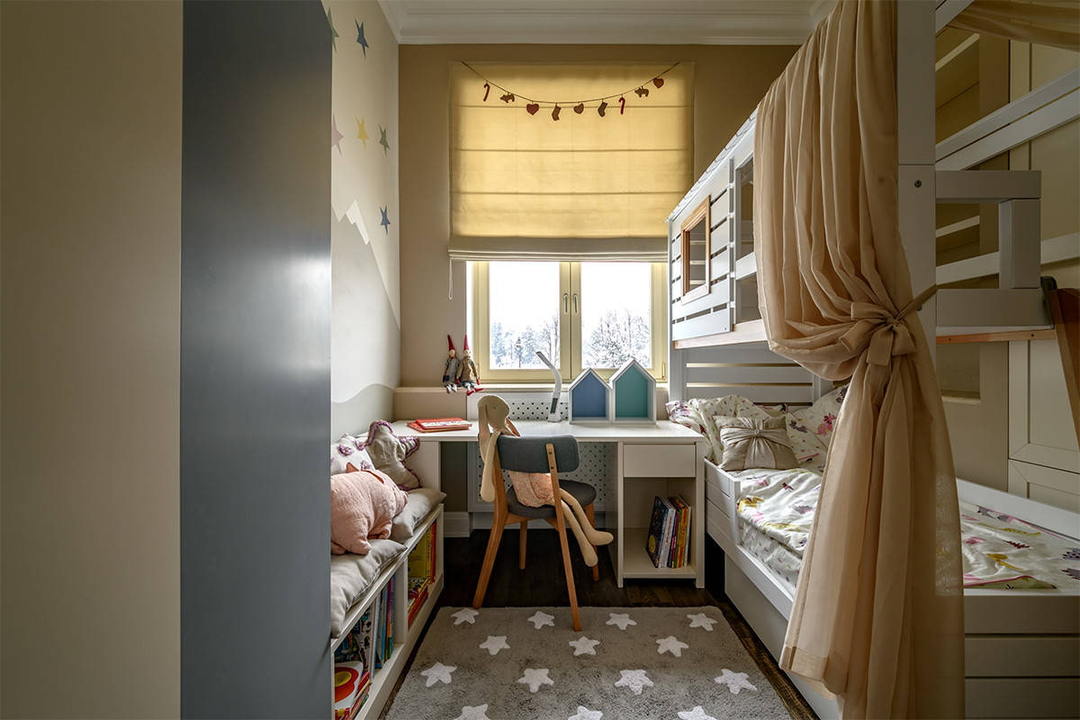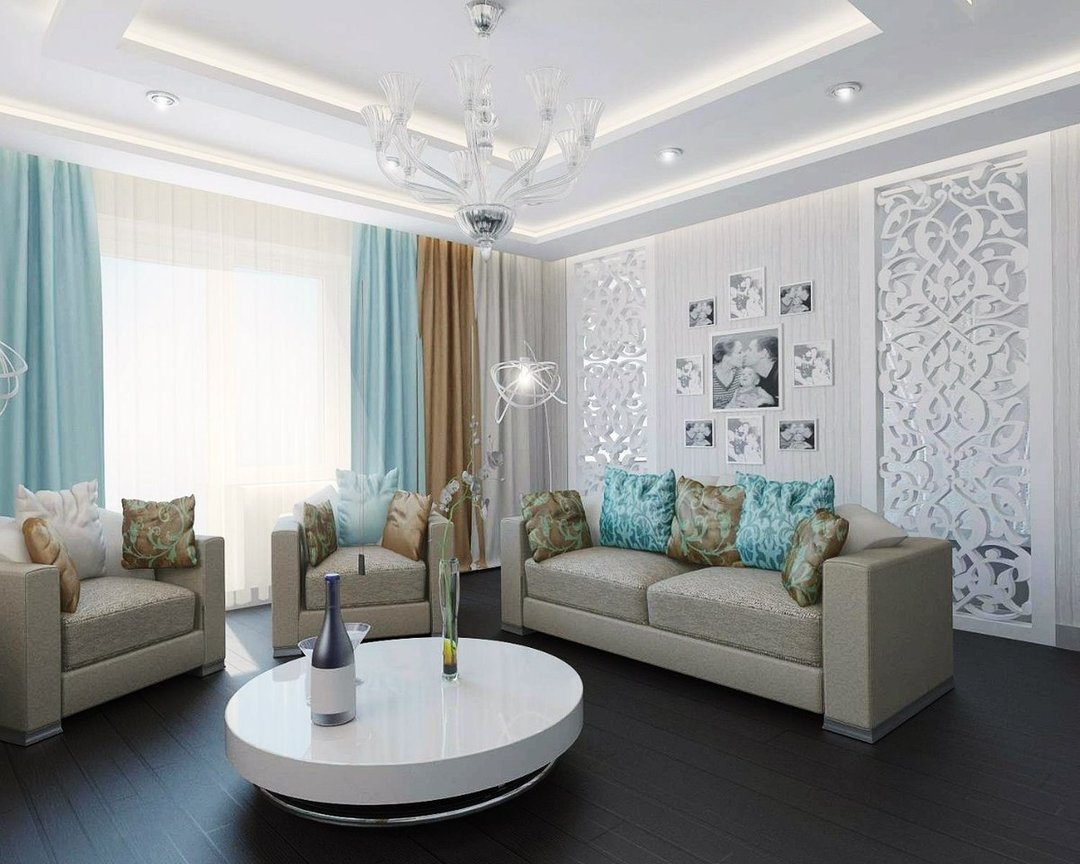Making the walls in the kitchen relates to one of the critical arrangement of steps. more suitable for modern decoration: panels, wallpaper and other materials. But the greatest effect creates a decorative (Venetian) plaster. She looks perfectly not only in the traditional interior, but also goes well with the modern style.
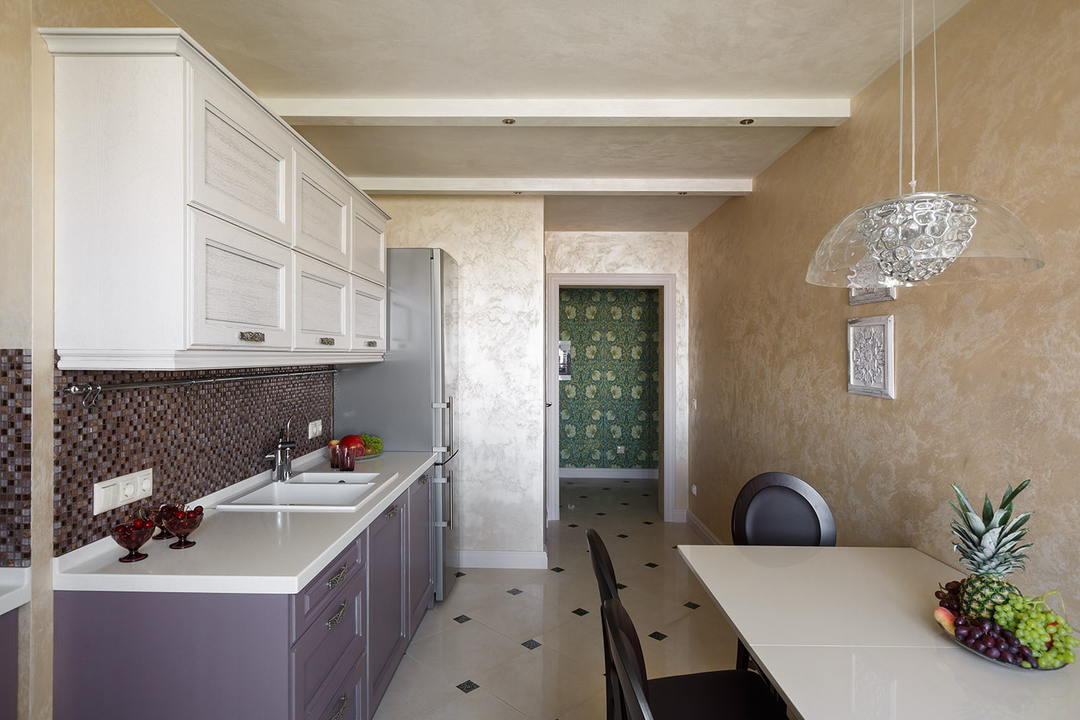
Decorative plaster in the kitchen - is a modern solution to repair.
Venetian plaster in the interior of the kitchen
Content
- Venetian plaster in the interior of the kitchen
- Advantages and disadvantages of the use of decorative plaster in the interior of the kitchen
- On the choice of decorative plaster
- Types of plaster for the kitchen
- According to the type of foundations
- By design and application technique
- Decorative plaster under a rock
- Decorative plaster for the concrete
- The combination of Venetian plaster with other materials in kitchen design
- conclusion
- VIDEO: The process of applying decorative plaster.
- 50 options for kitchen design with a decorative plaster:
The characteristic features - the marble pattern. The play of light and the effect of the overflow is achieved thanks to the special composition, comprising binders, acrylic dyes, marble dust and other structures. Modern formulations may contain components such as sand, quartz, onyx and granite. The result is a thick paste of consistency. This combination forms a strong, unusual quality coating.
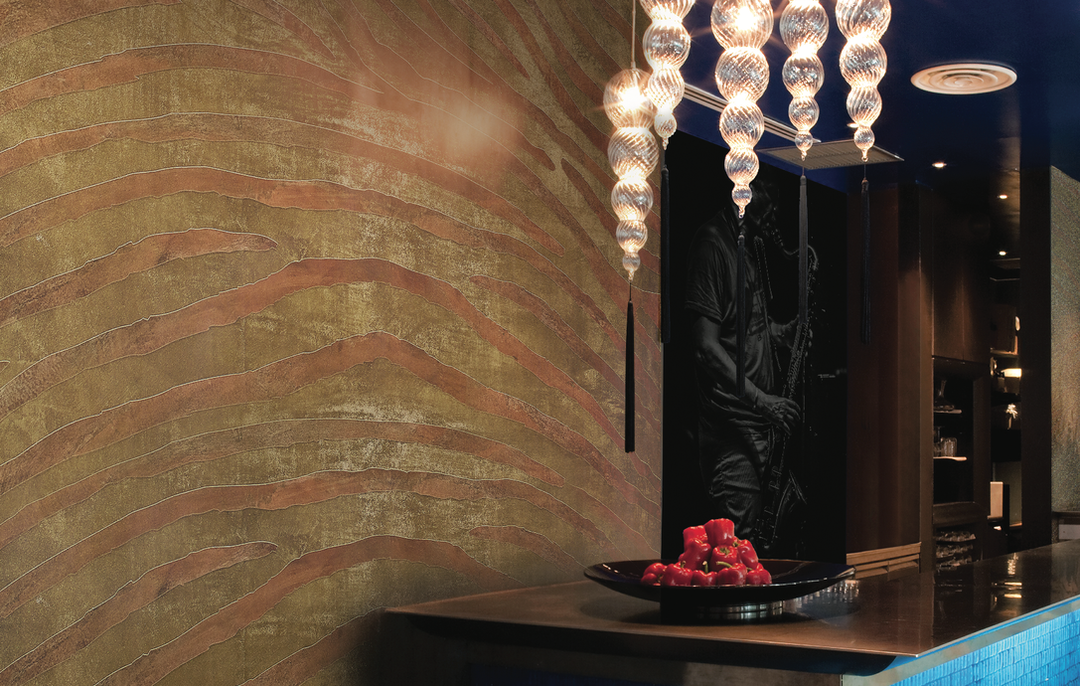
Used for interior decoration and to simulate a variety of materials, while having high performance.
Beige, light brown and gold - the traditional colors. Today, new technologies make it possible to achieve any shade. To obtain the desired color, it is tinted. In the sale of the finished composition or dry mixture comes.
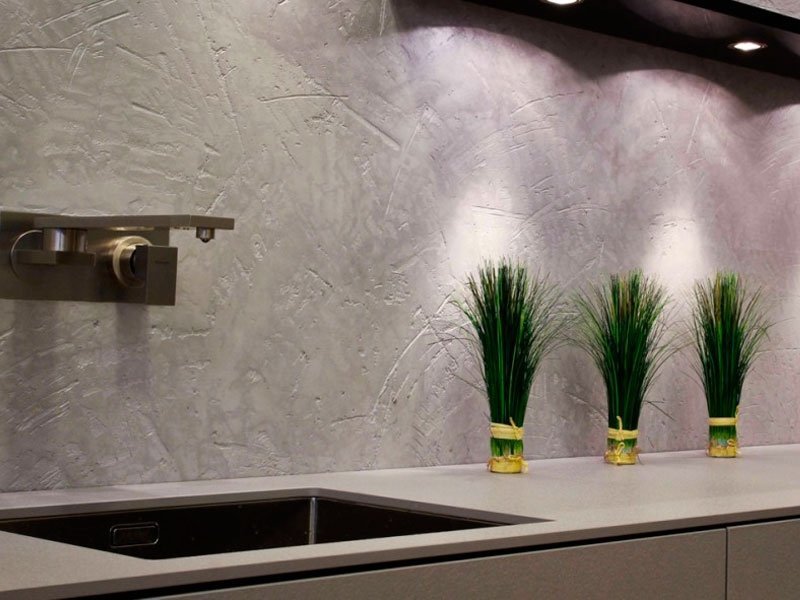
If you select walls, apron or dining area in the kitchen it is necessary to give preference to a practical, environmentally friendly and aesthetic coatings.
Important! To increase the life of the coating must be applied correctly, in compliance with the recommended process.
Advantages and disadvantages of the use of decorative plaster in the interior of the kitchen
Decorative composition can be coated as a separate part of the kitchen facilities, and all the walls completely. An exception is the work area (apron). Venetian plaster in the kitchen perfectly divides it into functional zones: a dining and working.

The composition includes natural materials and is suitable for use in the kitchen.
Some key benefits include:
- imitation of natural structures thanks to the wide range of colors;
- does not require the preparatory work prior to coating;
- masking defects and irregularities of the walls;
- resistance to moisture, temperature changes, mechanical impact and influence of aggressive cleaning agents;
- under any circumstances retains the texture and primary color;
- longevity (15-20 years);
- absence of joints and seamless coating (as a result of the wall less subject to abrasion);
- fire safety;
- It does not absorb odors;
- versatility (suitable not only for housing but also for office space);
- environmental friendliness;
- unpretentious care;
- natural ingredients allow to apply the mixture in child care centers and hospitals;
- simple application technology.
Among the many advantages there are also disadvantages:
- not elastic material, which increases the likelihood of cracking after drying;
- high price;
- complex dismantling (hard to remove from the walls);
- not combined with a lot of decoration.

Depending on the composition of the decorative plaster can have certain operating characteristics and appearance.
Tip! To give the appearance of larger wall marble effect, plaster is applied in several shades (2-3).
On the choice of decorative plaster
The main difference from the conventional decorative coating leveling composition lies in the presence of structure-forming components, plasticizers and polymer type binders. It is this structure creates a pattern similar to marble. Thus patterns can be varied.
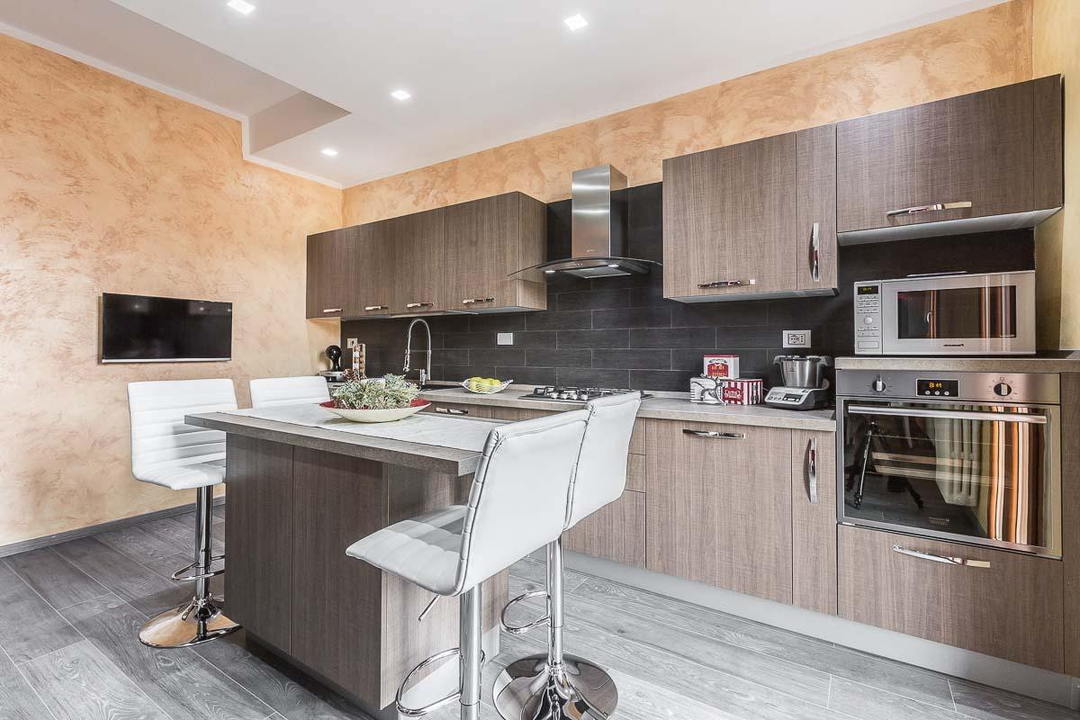
The use of mixtures based on mineral or synthetic material.
When choosing the correct composition is necessary to consider some nuances:
- matte or glossy surface;
- simulation of material (fabric, leather, quartz, marble, wood);
- the brightness of the colors, depending on the style of the interior;
- incoming components;
- producer (affects the quality of plaster);
- price (it can not be lower).
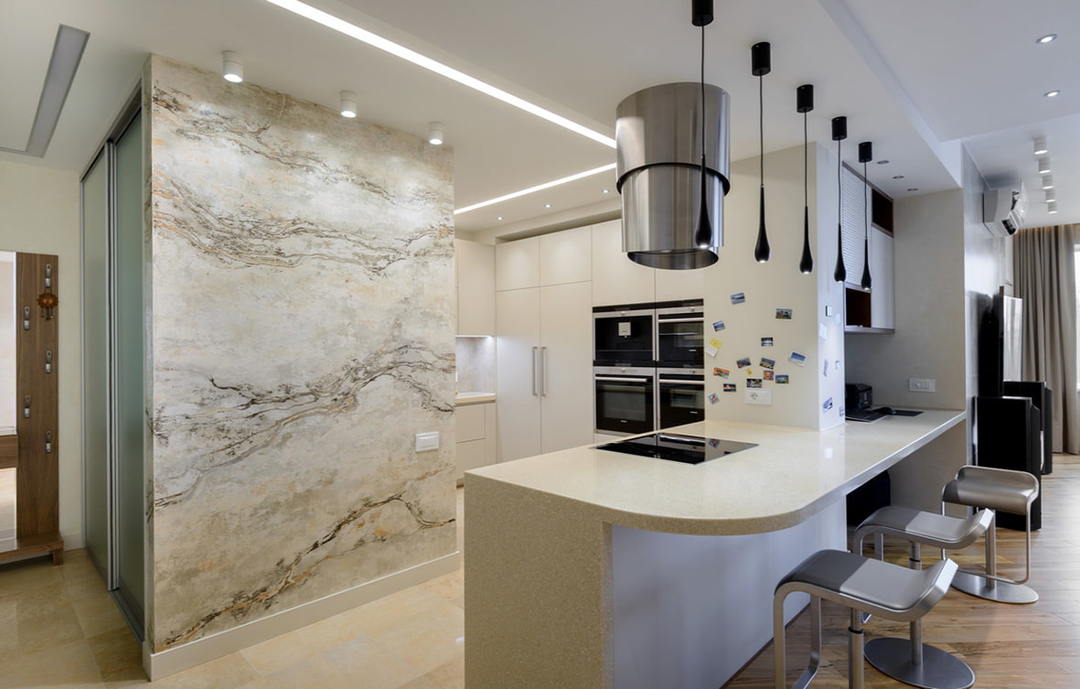
As additives to impart a relief surface using rock dust, cellulose fibers or pellets of the polymers.
For reference! Not suitable for outdoor decoration.
Types of plaster for the kitchen
Depending on the type of link member, and the outer surface of the billing there are several varieties of Venetian stucco.

The kitchen Venetian use, and structural textured plaster.
According to the type of foundations
The difference is determined by the coupling element:
- Classical (composed of components such as marble chips, coupling element and an additive composition imparting strength);
- pearl (composition comprises reflective particles that create optical effects);
- invoice (special application technique allows to obtain an imitation of natural stone, wood and other materials);
- polymer (it is characterized by improved adhesion to the base, fits well to concrete, gypsum board, primed metal, MDF, used as the base gypsum plaster);
- lime (a mixture based on lime has a better vapor permeability).
Composition based on cement and lime called mineral. The silicate mixture quartz chips present. Binding component protrudes silicone or acrylic.
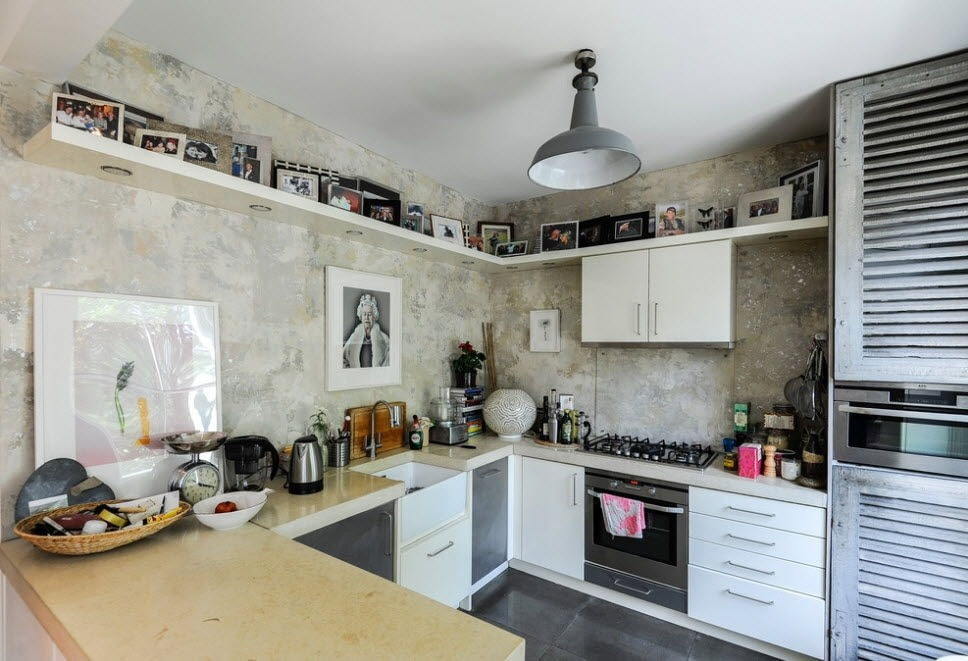
Marbling is made on the basis of plaster mixtures quite practical and economical as compared with natural stone.
By design and application technique
One part can recreate several different textures. One of them - the smooth, classic surface. Modeled plaster has a greater number of application techniques:
- craquelure (giving artificially aged surface, such as cracks by applying a special lacquer krakelyurnogo);
- Carrara (applied in several layers, each of which differs from the previous one by a semitone);
- coating streaks (effect provides bituminous marble chips tint carbon black);
- Trevignano (polymer blend and a special coating technique the walls create the effect of a marble simulating illumination inside the sun);
- enkausto (recreation of the matte surface);
- Marebello (velvet surface resembles a glossy streaks);
- Imperiale (a part of the gold pigment is poured in sunlight);
- Wet silk (effect expensive fabric).
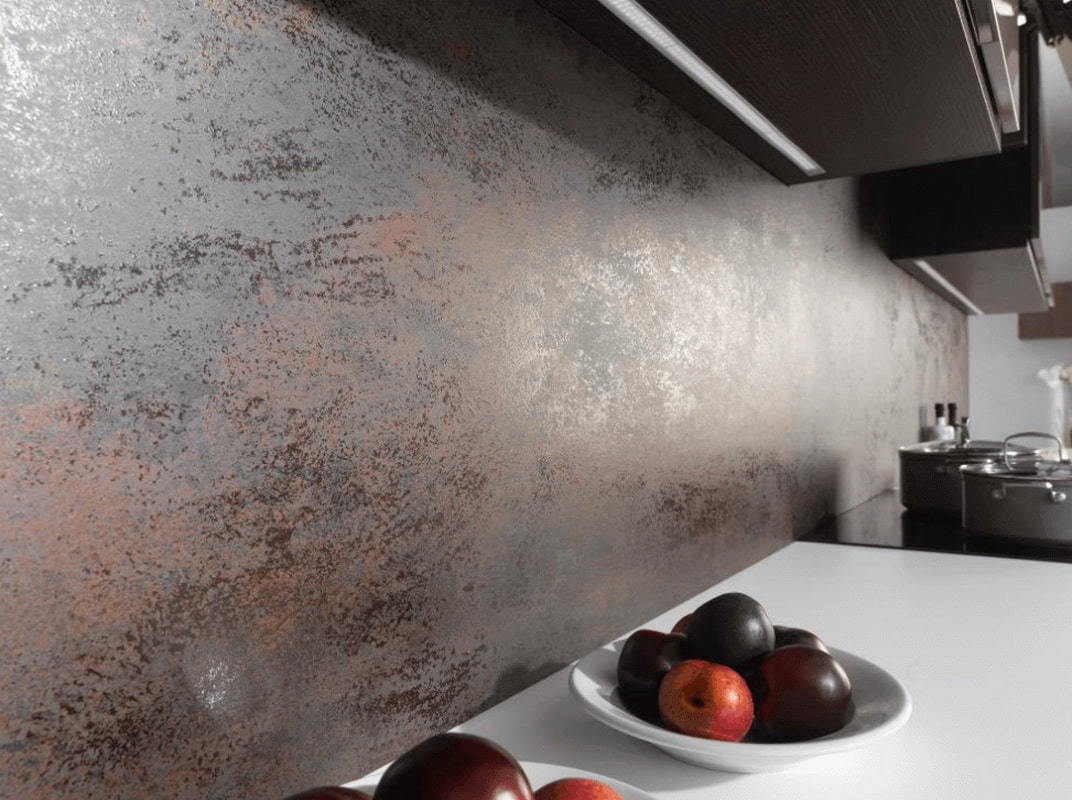
Venetian plaster is composed of stone dust, a binder, a dye, and allows you to play with color and relief.
For reference! Under the influence of the weather conditions of the environment stucco can crack, losing the decorative and performance properties.
Decorative plaster under a rock
Decorative plaster type easily replace artificial and natural materials. Used for finishing concrete, clay, gypsum, lime and other preparations. As a result, you can simulate malachite, granite, marble and other stones.

By textured plaster may include craquelure or artificially aged coating cracked.
Identify several techniques create a coating.
- Flat. Smooth plaster recreates such stones as granite, marble, polished stone wall. Perfectly smooth surface is covered with the composition of the wax and then polished.
- Texture. The exterior looks like a large stone piece with a rough surface.
- Ploskorelefnye. Issued in the form of masonry. Sutures are indicated minor groove. You may simulate bricks or stone blocks. In this wall surface turns flat.
- Convex. Used mold, recreate the most realistic picture.

The combination of glossy and matte veins, as well as nacreous spraying creates a natural material effect.
Stone plaster is perfectly combined with other building materials.

Decorative coating which has a granular structure by the inclusion of a material insoluble granules, or special fibers, called the structure.
Decorative plaster for the concrete
For some material characteristic features: it has a rough surface and a porous structure due to the content of sand and rock dust. To get relief, plaster is applied in several layers.
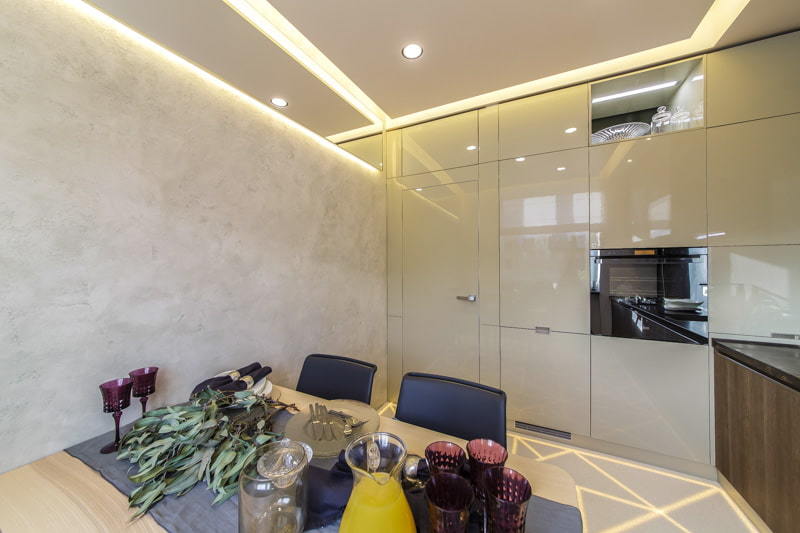
Decorative covering concrete with the effect can be performed using special formulations such as: microcement, decorative art or conventional concrete mortar.
There are two main types.
- Micro-cement. The composition is a cement-polymer mixture without silica fume. Suitable for finishing concrete, wood, metal, plastic and ceramic tile surfaces.
- Microconcrete. Base mix - cement. It comprises quartz chips, colorants and polymeric additive. The composition does not absorb odors thermostable and has a high hygroscopicity and plasticity.
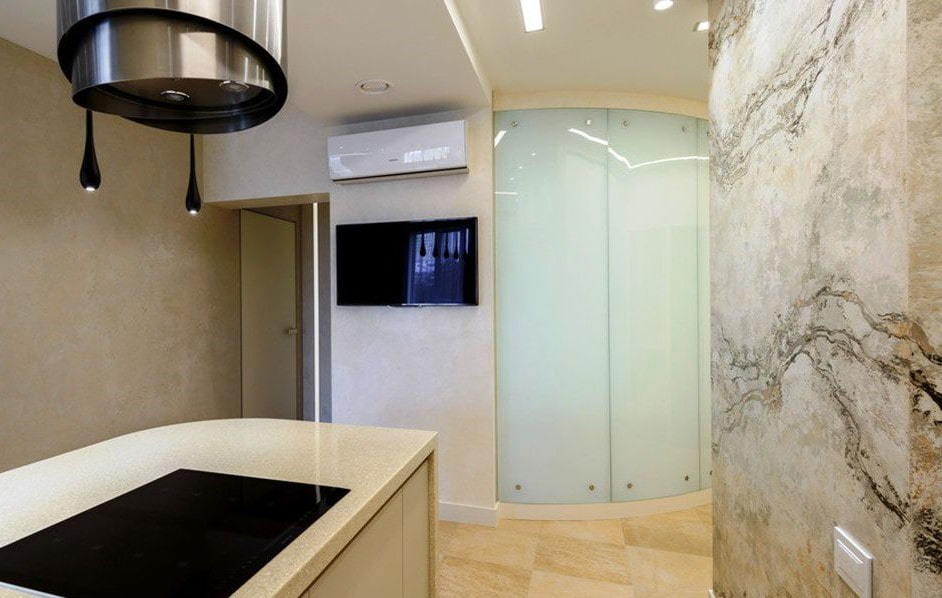
There is an extensive choice of gray, beige, white, sometimes rusty shades.
Decorative coating under the concrete can be used in any interior. The material has good sound insulation and water resistance. Owing to the low thermal conductivity increases the energy efficiency of facilities. Types of plaster and their compatibility in the kitchen you can see in the photo.

Plaster with a glossy or metallic pigment has the effect of wet silk kitchen interior.
The combination of Venetian plaster with other materials in kitchen design
View photo contemporary Venetian plaster in the interior diverse cuisine, you will notice that it is in harmony with the other materials. The most common combination of - wallpaper. This combination requires the additional use of decorative trims and moldings. Their main purpose is smoothing the transition between the two materials.
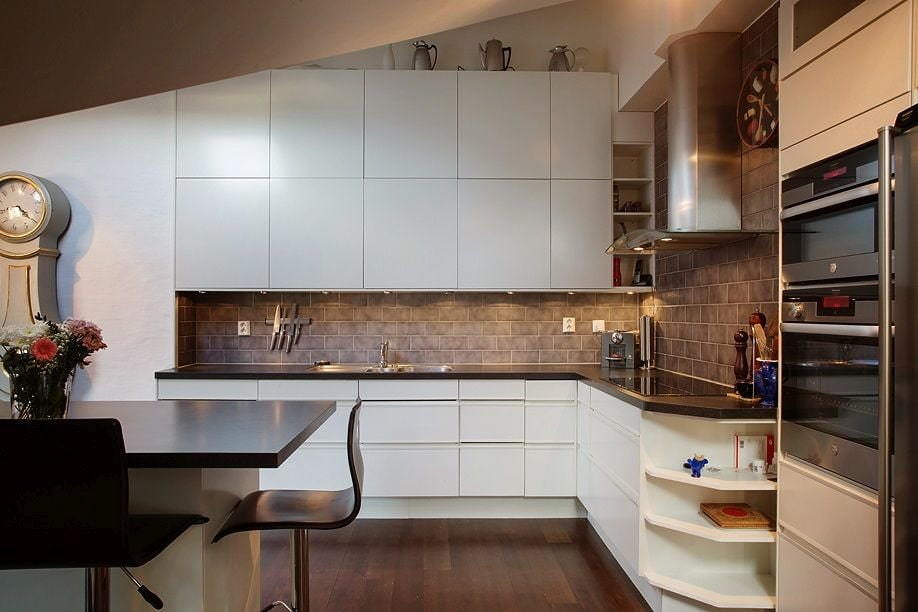
Plaster with coarse fractions and mineral base allows you to perform three-dimensional finish under a brick.
Quite often, a combination of plaster with matt and glossy plate. Material with good looks natural stone. However, independently perform such a difficult finish. It is better to turn to professionals who are not only quality work, but also to advise other options combination of Venetian plaster mixture.
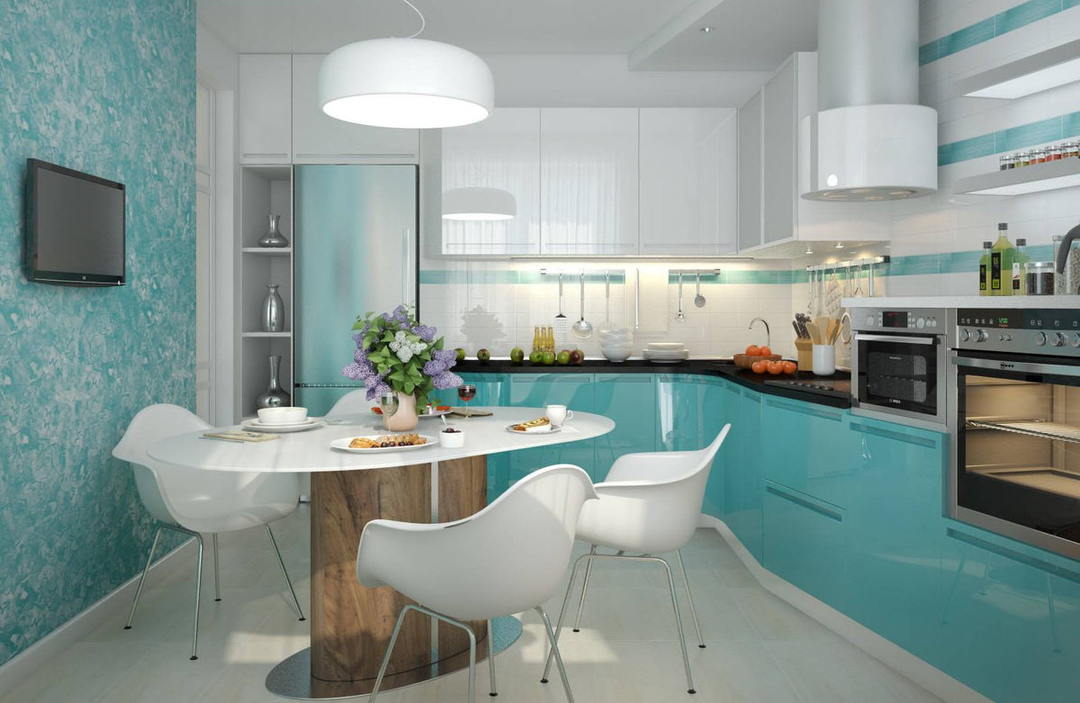
Decoration with various shades will help create the effect of scuffs on the wall or two-color pattern.
conclusion
Decorating the walls in the kitchen decorative plaster different aesthetics and appeal. Material that is based on the modified polymeric resins, and provides a beautiful durable coating imitating natural stone. Venetian Marbling characterized contrasting veins and spectacular glossy surface.

Shades can be mixed or sprayed onto each other as well as combined with decorative patterns.


